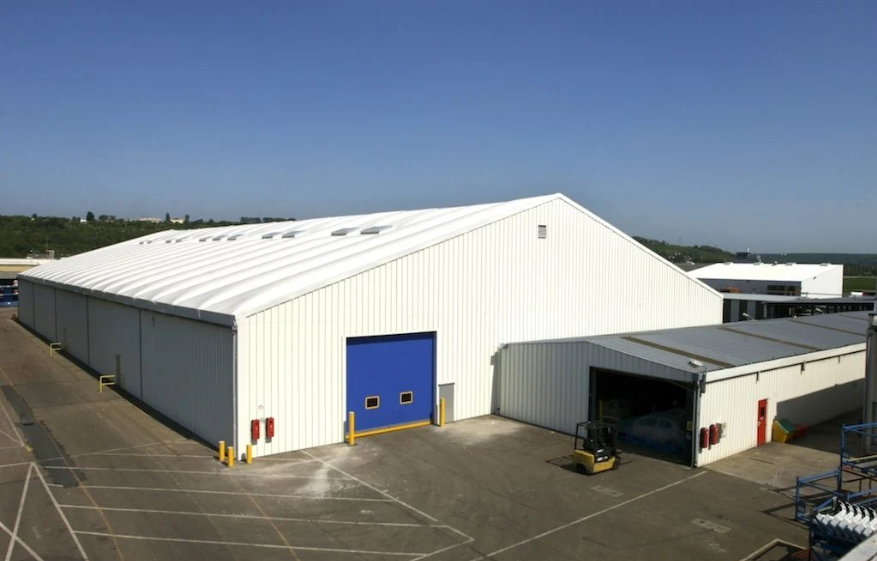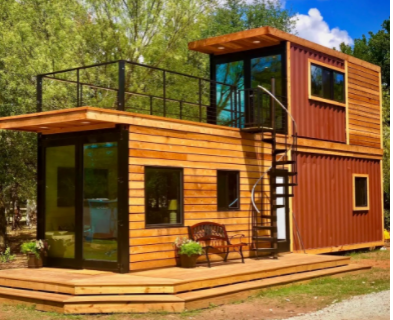When disaster strikes—whether in the form of powerful storms, devastating wildfires, or sudden humanitarian crises—communities and aid organizations race against the clock to provide safe, habitable shelter. Traditional tent cities, temporary fabric shelters, and hastily erected wooden shacks often fall short in durability, comfort, and energy efficiency. In recent years, however, container homes have emerged as a game-changer in emergency housing, offering solutions that are not only rapid and resilient but also cost-effective and environmentally conscious. Built from high-strength steel modules originally engineered for ocean voyages, these structures can be deployed quickly, withstand harsh climates, and be reused again and again. This comprehensive guide explores the advantages of container homes for disaster relief, from pre-configured units to bespoke multi-module villages, and highlights how Yantai Jedha Industrial and Trading Co., Ltd. is leading the charge in disaster-ready housing.
Rising Demand for Rapid, Resilient Emergency Shelters
Natural disasters, armed conflicts, and sudden mass displacements have converged to create one of the largest humanitarian crises in modern history. According to the United Nations, an estimated 100 million people were forcibly displaced worldwide at the end of 2023, while the increasing frequency of hurricanes, floods, and wildfires compounds the need for swift shelter solutions. In Oregon, California, and other fire-prone regions, emergencies demand not only immediate housing but also structures capable of resisting heat, smoke, and wind. Humanitarian agencies, government bodies, and private sector responders must balance speed of deployment with occupant safety and environmental impact.
Traditional shelters—such as tents, inflatable structures, or plywood barracks—offer temporary cover but often lack insulation, structural integrity, or longevity. They may leak, overheat, or require constant maintenance. In contrast, container homes provide a robust steel shell that resists wind gusts, heavy rains, and seismic stresses. Their standardized dimensions and durable construction make them ideal for modular villages that can be scaled to house dozens or even hundreds of individuals. Importantly, container solutions reduce both the carbon footprint and waste stream associated with one-time-use shelters, aligning emergency relief with sustainability goals.

Quick-Deploy Units: Pre-Configured Modules with Basic MEP
The hallmark of container-based emergency housing is rapid deployment. Yantai Jedha’s quick-deploy units arrive pre-configured with basic mechanical, electrical, and plumbing (MEP) systems already installed at the factory. Each 20- or 40-foot module can include:
Pre-wired electrical circuits, complete with breaker panels, outlets, and lighting fixtures.
Plumbing manifolds, enabling on-site hookup of sinks, showers, and latrines.
Integrated HVAC rough-ins for ductless mini-splits or cartridge heaters.
Factory-installed insulation and vapor barriers to ensure thermal comfort from day one.
Because these units are produced in controlled environments, quality is consistently high and on-site labor requirements plummet. As soon as the modules arrive, trained crews can position them on prepared pads, connect utilities, and finalize interior finishes within days rather than weeks. For emergency responders, this means moving beyond temporary tents to climate-controlled shelters that boost morale, protect health, and reduce logistical complexity.
In a recent wildfire relief effort in Northern California, a municipal emergency management office received 30 Jedha quick-deploy modules. By leveraging Jedha’s standardized MEP packages, the entire housing village was operational within ten days of site clearance—compared to an average 30-day timeline for conventional mobile home units.
Climate & Safety Features: Insulation, Fire-Retardant Panels, Secure Locks
Container homes excel in harsh environments thanks to their steel shells and adaptable interiors. Key climate and safety features include:
High-Performance Insulation: Closed-cell spray foam or rigid foam panels deliver R-values up to R-7 per inch, sealing seams and preventing thermal bridging. This keeps interiors cool under desert sun and warm during cold snaps.
Fire-Retardant Materials: Interior walls and ceilings can be lined with Class A fire-rated gypsum board or intumescent-coated steel panels. This passive protection slows flame spread and supports occupant evacuation.
Secure Access: Heavy-duty steel doors with multi-point locking systems offer greater security than canvas flaps or wooden shutters, reducing theft and unauthorized entry.
Air-Tight Sealing: Precision-fabricated gaskets and door seals prevent dust, smoke, and water intrusion—critical in wildfire zones or flood-prone towns.
Ventilation & Air Filtration: Integration of HEPA cockpit filters or positive-pressure airlock vestibules enables clean-air zones, safeguarding vulnerable populations from smoke, dust, or airborne pathogens.
These features create a safe, secure environment that outperforms temporary tent camps and many site-built mobile homes. In hurricane recovery zones, container shelters have shown remarkable resilience, withstanding 100+ mph gusts when properly anchored. During the 2023 monsoon floods in South Asia, Jedha’s emergency modules maintained dry, breathable interiors even under three days of nonstop rain.
Temporary vs. Permanent Foundations: From Gravel Pads to Helix Piles
Container homes can be installed on a spectrum of foundation types, ranging from truly temporary to fully permanent, depending on the intended duration and ground conditions.
Gravel Pads
Best for: Short‐term deployments of up to 24 months.
Cost & Speed: Minimal site prep—compacted gravel sets cost less than $1,500 per module and take under two days to install.
Pros/Cons: Quick and inexpensive, but modules may shift in freeze‐thaw cycles and require periodic re-leveling.
Concrete Piers or Footings
Best for: Medium-term use (2–5 years).
Cost & Speed: $3,000–$6,000 per module, installed in one week for a 10‐unit village.
Pros/Cons: Stable and reusable across deployments; however, more involved civil works and curing time.
Helix Piles (Screw Anchors)
Best for: Permanent or multi-site reuse.
Cost & Speed: $2,500–$5,000 per module, immediate load‐bearing—no concrete cure needed.
Pros/Cons: Low environmental impact, minimal excavation, ideal for sensitive soils or wet sites.
Monolithic Slab
Best for: Permanent installations in urban or suburban zones.
Cost & Speed: $8,000–$12,000 per module; four weeks to pour and cure.
Pros/Cons: Highest stability and building code compliance; longest lead time and costliest.
By selecting the appropriate foundation system, relief planners and contractors can balance budget, timeline, and reuse potential. Yantai Jedha provides engineering guidance and foundation design kits for each scenario, ensuring modules remain secure and code-compliant.
Multi-Unit Villages: Modular Clusters for Clinics, Command Centers, Dorms
Beyond single-unit shelters, container homes shine when deployed as modular villages. Clusters of 10, 20, or more modules can be arranged to form:
Clinics & Medical Triage Centers: Stainless-steel sink modules, clean rooms, and patient wards configured in a U-shape for efficient workflow and sanitation control.
Command & Coordination Hubs: Stacked modules with conference rooms, communication racks, and office cubicles to manage relief operations.
Dormitory Blocks: Rows of containers fitted with bunk beds, lockers, and shared restrooms create safe, dignified housing for displaced families or relief staff.
Mess Halls & Kitchens: Specially outfitted culinary modules with grease hoods, walk-in coolers, and dishwashing stations.
Sanitation & Hygiene Facilities: Multi-stall bathrooms, laundry rooms, and hygiene pods to meet public health standards.
The beauty of modular villages is twofold: speed and scalability. A 50-module village can be fully erected and operational in under six weeks, accommodating up to 300 occupants. When needs shrink, modules can be decommissioned and relocated; when new crises emerge, the same assets redeploy without rebuilding. Yantai Jedha’s project planners offer 3D site modeling to optimize module placement, traffic flow, and utility routing—ensuring efficient use of land and resources.

Jedha’s Relief Solutions: Stocked Inventory, NGO/Government Partnerships
Yantai Jedha Industrial and Trading Co., Ltd. has established itself as a premier supplier of emergency container housing, combining global manufacturing capacity with local partnerships to meet any scale of crisis. Key elements of Jedha’s relief offerings include:
Pre-Stocked Module Inventory: Regional warehouses maintain ready-to-ship quick-deploy units in 20- and 40-foot lengths, ensuring lead times of 5–10 business days.
NGO and Government Contracts: Jedha collaborates with national disaster agencies, international NGOs, and defense ministries to establish framework agreements, pre-approved specifications, and pre-negotiated pricing for rapid call-offs.
Turnkey Project Management: From site assessment and geotechnical surveys to customs clearance and on-site assembly, Jedha’s turnkey teams handle every step—freeing relief organizations to focus on humanitarian missions.
Training and After-Sales Support: Jedha provides operator manuals, maintenance training, and spare-parts programs to extend the service life of deployed modules.
Sustainability and Recycling Programs: At end-of-use, modules can be returned, refurbished, or broken down for steel recycling—minimizing waste and promoting circular economy practices.
During the 2024 flood response in Eastern Europe, Jedha delivered 120 modules—complete with medical, dining, and dormitory configurations—in under three weeks. Local authorities praised the swift turnaround and durability of the units, which withstood sub-zero temperatures and heavy snowfall without additional heating beyond the integrated HVAC units.
Conclusion
In an unpredictable world, the capacity to house vulnerable populations swiftly, safely, and sustainably has never been more critical. Container homes fulfill this need with an unbeatable combination of affordability, durability, and eco-friendliness. Their pre-configured MEP systems, climate-resilient features, versatile foundation options, and modular village capability make them an essential tool for emergency planners and relief agencies. Yantai Jedha Industrial and Trading Co., Ltd. stands at the forefront of this revolution, offering stocked inventories, turnkey services, and global partnerships that ensure help arrives on time—and lasts.
Whether you are responding to a wildfire, flood, refugee influx, or pandemic-driven displacement, container-based shelters provide a future-proof solution that reduces waste, cuts costs, and safeguards human dignity. To learn more about Jedha’s relief housing modules or to request a rapid-deployment quote, visit www.jedhabuilding.com or contact their emergency solutions team directly. In the race against disaster, speed and reliability can mean the difference between crisis and recovery—and container homes deliver on both fronts.











